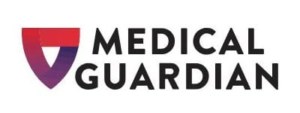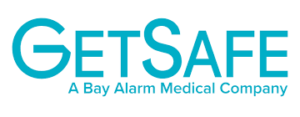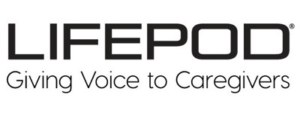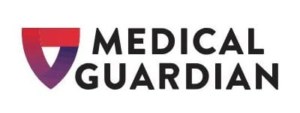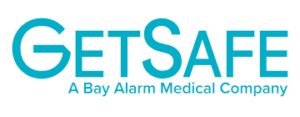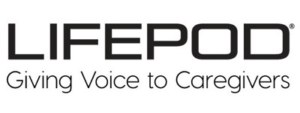The Best Voice-Activated Medical Alert Systems For Seniors

Results from a 2021 AARP survey show what most of us already know—most adults 50 years of age and older want to remain in their homes for as long as possible. Medical alert systems enable them to do so. But what if your loved one is resistant to wearing a call button around the house or is too forgetful to remember to put it on? Or perhaps they have a medical condition that makes pushing a button difficult. For such individuals, voice-activated medical systems may be the perfect fit. These medical alert systems enable seniors to call for assistance using only their voice, and they’re proving to be game-changers in the personal emergency response system market.
Key Takeaways
- Voice-activated life alert systems detect distress calls from more than 1,000 feet away and connect users with an emergency responder.
- The devices are ideal for individuals who are forgetful or are resistant to putting on a wearable device at home.
- Some voice-activated emergency alert systems can be set up to provide appointment and medication reminders and enable caregivers and care recipients to communicate with each other remotely.
About Voice-Activated Medical Alert Systems
Medical alert systems provide a valuable service. They enable seniors to age at home for as long as possible. The convenience of voice-activated systems over at-home or mobile devices is that voice-activated devices are completely hands-free. All someone has to do is call out a certain phrase to activate the system. The system will alert the monitoring service, and, if needed, the proper help will be on its way. Voice-activated medical alert devices can be a huge relief for caregivers and their loved ones.
There are several brands and types of voice-activated medical alert systems, including wall-mounted buttons and units with smart speakers. But how do you know which one works best for your loved one?
According to Gareth Mahon, CEO of The CareSide, a home care and nursing service for the elderly and disabled, “[It is] best to do lots of research and speak to representatives from each company as all systems have their pros and cons.” Mahon adds, “For example, does your loved one leave the house often, so coverage away from the home is important? Or are there budget considerations or cognitive limitations for the user (which might indicate a simple, cheap solution is best)?”
It can be difficult to narrow down your options with so many brands on the market today. To help, our expert team of medical alert system reviewers looked at some of the best medical alert system brands of voice-activated devices and selected our top picks.
Voice-Activated Medical Alert System Reviews
Medical Guardian is one of the top-rated medical alert companies in the country, offering both at-home and on-the-go personal emergency response systems. All on-the-go devices have voice-assisted technology, but if you’re looking for a voice-activated system that doesn’t need to be worn, consider the Home 2.0. This model is powered by cellular LTE and Wi-Fi and voice-activated, wall-mounted distress buttons can be added to your subscription.
The voice-activated wall button works up to 500 feet from the base unit. For larger homes, more than one unit may be necessary. Just say, “Help me” twice, and the system will immediately connect to Medical Guardian’s 24/7 monitoring center. The user can also press the button on the unit to call for help.
Medical Guardian doesn’t charge an equipment or setup fee for its voice-activated panic button, but it does require a $4.99 monthly service fee for every voice-activated unit.
Cost: $4.99 additional monthly fee per voice-activated button unit with Medical Guardian’s Home 2.0 subscription. The Home 2.0 requires a one-time $124.95 equipment fee and a $34.95 monthly monitoring fee. Taxes and shipping costs may apply. Occasional discounts are available.
Voice-Activated Features
- Wall-mounted button add-on with Home 2.0 subscription. It alerts the 24/7 monitoring center via voice command, pressing the button, or pulling the attached cord
Pros
-
Voice-, button-, and cord-activated for multiple options to alert monitoring center
-
No installation fees
Cons
-
No risk-free trial
-
Not available with Medical Guardian’s landline at-home system
GetSafe is a medical alert provider that belongs to the Bay Alarm family of companies. While Bay Alarm Medical offers in-home and on-the-go personal emergency response systems using wearable call buttons, GetSafe’s focus is providing wireless voice-activated alarms that don’t require a wearable button.
GetSafe’s system uses an in-home base unit with a voice-activated mini-console wall button that can be placed around the house. The unit activates when you say, “Call 9-1-1” twice, press the panic button, or pull the attached cord. The buttons are completely waterproof, so they are suitable for use in the bathroom or kitchen.
Plan packages are tailored to the size of your home. Each package includes a base station and wearable help button, but the number of voice-activated and standard wall buttons depends on the size of your home.
The Starter package is best for a one-bedroom home or condo and comes with one voice-activated wall button. The Standard package is designed for a two- to three-bedroom home and has two voice-activated wall buttons and one standard wall button. Select is the largest package and fits four- to five-bedroom homes. It includes three voice-activated wall buttons and two standard wall buttons. Voice-activated wall buttons can be added to any package for a $79 one-time fee.
The equipment fee varies depending on how many devices you need for your home. The monthly monitoring fee for each package is $24.95, regardless of the number of in-home devices.
GetSafe may be a better option if you have a larger home and need multiple voice-activated wall buttons for full coverage. You’ll pay a one-time equipment fee and flat monthly monitoring fee without needing to add additional wall buttons.
Cost: One-time equipment fee starting at $99 ($79 discounted price) for small homes and up to $279 ($229 discounted price) or more for larger homes, plus a $24.95 monthly monitoring fee. Taxes and shipping costs may apply. Equipment fee discounts are run frequently throughout the year.
Voice-Activated Features
- Includes a wall-mounted button—or multiple buttons, depending on the package—that can alert the 24/7 monitoring service via voice command, pressing the button, or pulling the attached cord
- Includes complimentary lanyard button
Pros
-
Waterproof, allowing it to be placed in the bathroom next to the tub or in the kitchen
-
Low monthly fee, regardless of the number of voice-activated consoles
-
30-day risk-free trial
Cons
-
Front-end setup fees and equipment costs can be steep, especially if more than one unit is needed
LifePod is a proactive and reactive dialogue management platform enhanced with the MobileHelp emergency response system via iHome smart speakers. When the LifePod speaker detects a cry for help—such as, “Hello LifePod, I need help now!”—it will ask if you have a medical emergency. If you confirm “yes” or don’t respond, you will be connected to a MobileHelp emergency response center. If you say you don’t need help, their LifePod will notify a caregiver via text message saying that the user asked for help, but it was not an actual medical emergency.
LifePod isn’t just for emergencies. It also enables caregivers and care recipients to communicate with each other remotely. A remote caregiver can also set up and control the unit using an online portal to schedule check-ins and medication reminders.
Cost: LifePod subscriptions cost $49 per month. Discounts are available with semi-annual and annual payment plans. All subscriptions include a free iHome Smart Speaker powered by LifePod. There’s also no activation fee or shipping costs, but taxes may apply. Occasional discounts are available.
Voice-Activated Features
- Includes iHome ILP14 Smart Speaker with a proactive-voice platform for the care recipient and access to an online portal for caregivers
- Includes two-way remote voice service between caregiver and care recipient and enables the caregiver to set up check-ins and medication reminders
Pros
-
No upfront costs for equipment or setup
-
Online portable enables interaction between caregiver and care recipient
-
30-day return policy
Cons
-
Voice-only system—no button or pull cord backup
Who Needs a Voice-Activated Medical Alert System?
Not everyone will benefit from a voice-activated medical alert system. People who will benefit most from one of these systems include:
Older Adults Who Refuse Or Forget To Wear Their Pendant/Wristbands
Wearables enable older adults to call for help by just pushing a button that they wear around their neck or wrist. But if they refuse to wear the button or forget to put it on, the service won’t be useful. Voice-activated devices are a great way for seniors to call for help by using their voice.
Those With Physical Or Cognitive Impairments
Voice-activated systems can be beneficial for seniors with health conditions that make it difficult for them to get to a help button, such as those who are visually impaired or who cannot remember to keep their wearable device charged.
Those Who Have Difficulty With Modern Technology
Some older adults may have difficulty working medical alert systems. For instance, many folks may find it difficult to remember which button to push or how to charge the batteries in the devices. Voice-activated systems only require seniors to use a key phrase to reach the monitoring center.
How to Choose the Best Voice-Activated Medical Alert System that’s Right for You
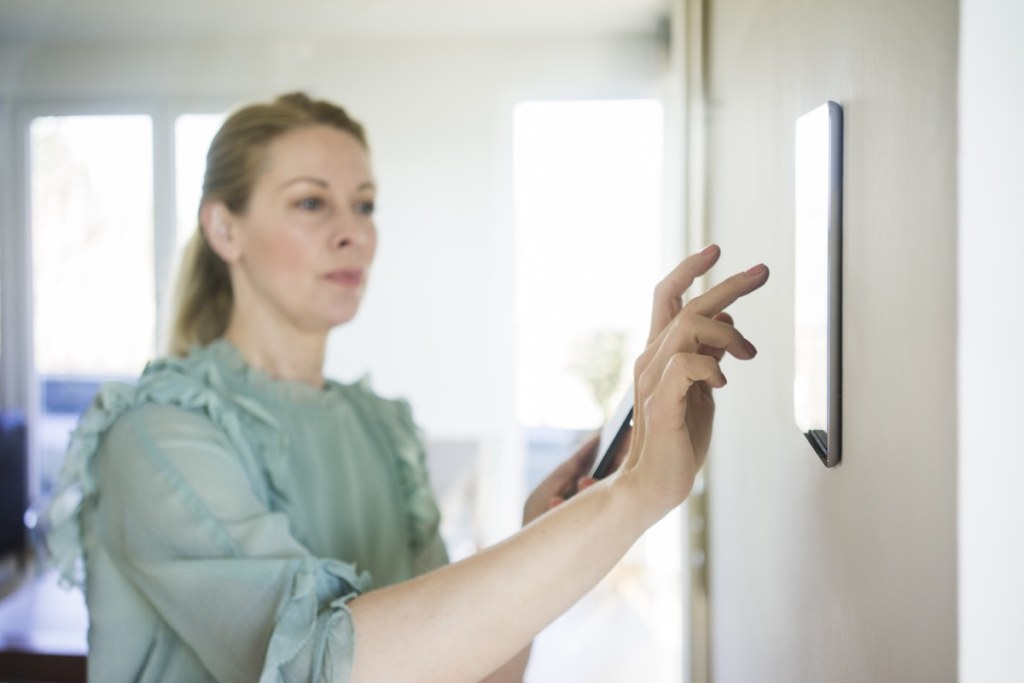
Here are some things to consider when choosing a voice-activated medical alert system:
Backup battery. All at-home medical alert systems should come with a backup battery to ensure your loved one remains protected in a power outage. We recommend a system that has a lifespan of at least 30 hours.
Response time. When your loved one calls for assistance, you want to ensure they receive a prompt response. Medical alert operators typically respond in less than a minute, while some may even answer within seconds.
Range. Voice-activated medical alert systems are designed to detect a distress call from a user from 1,000 feet or more in all directions. Be sure to check your voice-activated system’s range and place it close enough to detect your loved one’s voice. If necessary, place multiple speakers throughout their home.
Value. Medical alert systems provide a potentially life-saving service, which makes them priceless. This is a good thing, because they aren’t cheap. When choosing a system, consider what features would most benefit your loved one. Systems with wearable devices may be less expensive than voice-activated ones, but the value lessens if your loved one forgets to put on the device or is resistant.
Additional features. Voice-activated systems send help in the event of an emergency. Some also offer special features, such as appointment and medication reminders, indoor temperature checks, and entertainment options.
Pros of Owning a Voice Activated Medical Alert System
More convenient for older adults who have low vision or those with mobility issues
A safer option for seniors with cognitive issues who may forget to put on a wearable device
Some systems can give appointment and medication reminders
Provides peace of mind that your loved one can call for help if they are unable to press the call button
Cons of Owning a Voice Activated Medical Alert System
- If your loved one has an emergency and cannot speak clearly when calling for help, the system may not detect their distress signal.
- Some voice-activated systems and monitoring services come with a steep price tag.
Bottom Line
Voice-activated medical alert systems enable aging adults to live in their homes as long as possible. They are especially convenient for seniors who are resistant to wearing a call button or have medical issues that make it difficult to use a button. These systems are not cheap—some require upfront equipment or setup fees on top of monthly monitoring fees—but that price pales compared to the cost of assisted living or skilled nursing care.
Why You Can Trust Our Review
We strive to create honest, helpful reviews backed by firsthand shopping, testing, and research. Our content is medically reviewed and unbiased to help you choose the right medical alert system for you or your loved one.
From over 1,000 hours of research, we choose 11 of the top brands that we believe are the best medical alert systems. We did the following throughout our research process:
- Consulted with geriatricians and adult caregivers
- Mystery-shopped the brands
- Surveyed medical alert system users
- Tested various medical alert systems
- Interviewed experts in the field
- Read hundreds of verified customer reviews from trusted third parties, such as Better Business Bureau (BBB) and Trustpilot
Frequently Asked Questions
-
Voice-activated medical alert systems can be pricey. Some require upfront equipment or setup fees along with a monthly monitoring fee. But the systems offer a valuable service, as they enable elderly and frail adults to live independently for as long as possible. Voice-activated medical alert systems are also far less expensive than the cost of assisted living, nursing home care, or employing a full-time aide.
Pricing is accurate as of April 11, 2022.
WRITTEN BY
Jennifer Walker-Journey is a former Marketing & Communications Director for continuum care facilities where she advocated for the quality care of elderly and disabled individuals living in independent and assisted living facilities, nursing homes, and specialized units for Alzheimer’s and dementia care. She writes extensively about eldercare safety, as well as the safety and efficacy of medications and medical devices designed to help seniors live more independent lives. Much of her research in this arena has focused on hearing aids, medical alert systems, and other devices that help seniors age in place safely and provide peace of mind to caregivers.
MEDICALLY REVIEWED BY
Jenny is an Adult-Gerontology Primary Care Nurse Practitioner in NYC with a passion for working with aging adults and their family members. Prior to her clinical training at Vanderbilt School of Nursing, she worked in business and medical research at Harvard Business School and Massachusetts General Hospital. As a Caregiving Coach at Givers, Jenny helps family members manage the financial, emotional, and educational stresses of caring for their loved ones who are aging in place.
